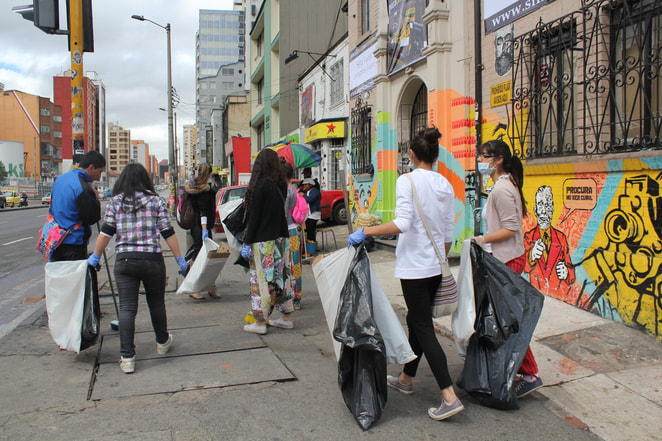understanding collective action theories through massive mobilizations in the public space11/5/2016 I'm a founder of a civic movement in Bogotá that promotes collective action and cooperation through lived experiences in the public space. We plan and execute massive mobilizations where people collaborate with each other and achieve goals together. The experience of engaging directly with communities brings up aspects on collective action at micro level, which are hardly discoverable from a theoretical perspective. "Why would I stop littering, if everyone in the city will keep doing it?" "Is my individual contribution actually relevant for larger social problems?" "By cleaning the city one day, no one is ensuring that will be clean in the long term". All sort of pessimistic questions inspired this initiative, specifically around the issue of waste management in Bogotá, Colombia. A group of very driven volunteers and I, decided to promote a notion of change that transcends the idea of an individual helping with one action, but encouraging the same individual to actively sustain the positive change by demonstrating impact, correcting others and generating a sense of responsibility on them. The rationale of the mobilizations took inspiration from collective action theories, that have identified the characteristics of scenarios where people will most likely cooperate. Some of these characteristics include the design of incentives for people to pursue a change, crafting messages that connect to people, controlling the events to prevent opportunism, eliminating suspicion, providing correct and timely information, ensuring the security of the events for all participants and generating credibility. We did need clever incentives, since we called people to wake up quite early on a Sunday to go and clean the smelly streets of Bogotá. For a more detail presentation of the conceptual framework of this project (in Spanish) click here. Here are our biggest learnings, when trying to link theory with practice:
Micro intentions reveal the true nature of altruistic behaviours In an environment where collective action is happening, there are spontaneous actions from people that illustrate the nature of altruistic behaviours. These actions are intrinsic to each person and genuine in intention. Interestingly, in theory they don´t count as triggers for collaboration. In practice, they were enormously powerful for generating the best results. In our experience, some of them included people correcting others, sharing knowledge, demonstrating abilities, smiling and coexisting in a space. These are the actions that inspire and trigger the whole sociological conception of this project, instead of a macro perspective of people following others as a justification for collective behaviour. These micro intentions guided the design of the following versions of the project. We emphasized and encouraged any interactions amongst people that would make them work together. The first edition of the massive garbage pickups took place in Bogotá in 23 collection points, convocating 1,500 citizens. The movement expanded to other cities and towns in Colombia: Cali, Bucaramanga, Yopal, Madrid, Funza and Mosquera. In October 2014, we organized an international conference, boosting the knowledge and frameworks of the mobilizations to larger debates.
0 Comments
Your comment will be posted after it is approved.
Leave a Reply. |
|








